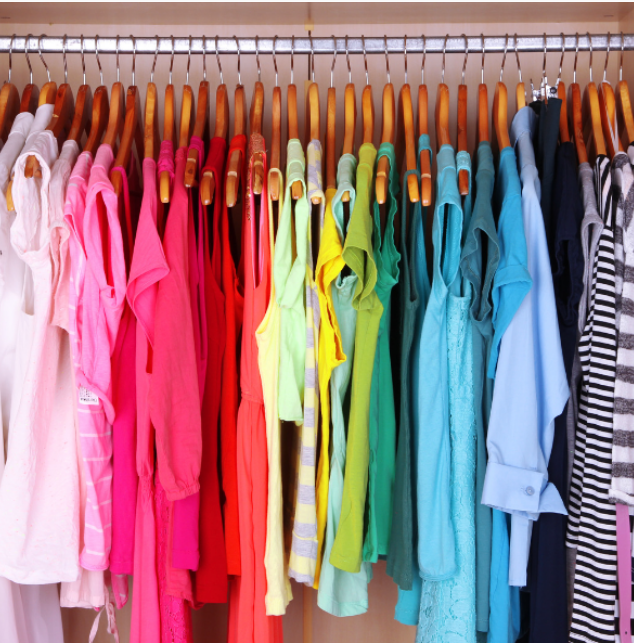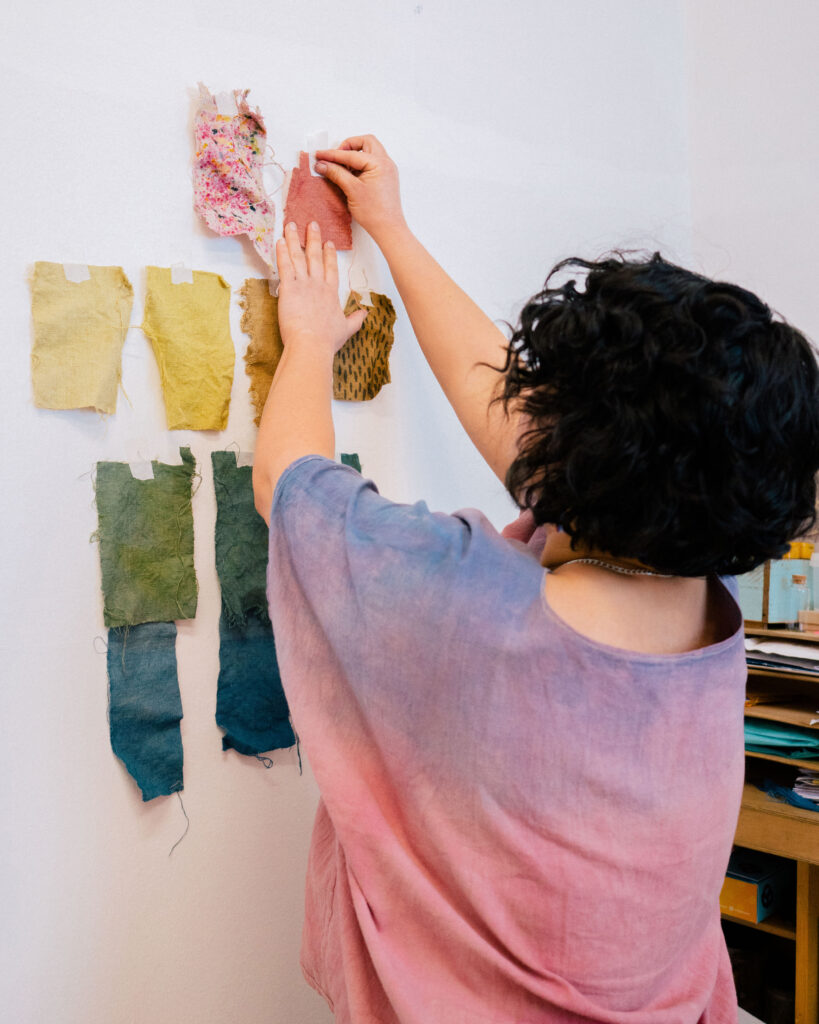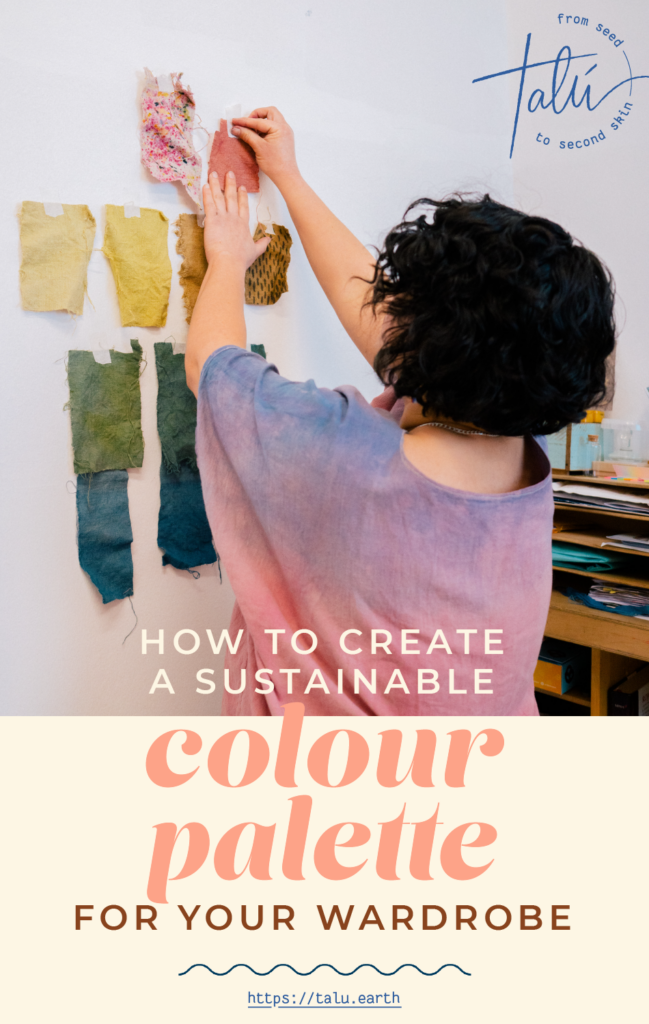I adore fashion. I love outwardly expressing my personality… but I hate waste.
So it’s a good thing that your sustainable capsule wardrobe doesn’t have to be boring. Building your own personal wardrobe colour palette edits your tastes down into just the best of the best.
To me, colour is everything.
It’s always felt like part of my identity, even down to my name, Malú Colorín. I’ve been obsessed with brightness since I was a child, and that love sustained itself into my adulthood.
Colour is joy, sadness, passion, love! It’s an integral part of my life even now, as I’ve found my passion in dyeing textiles to bring them back to life with natural materials.
But I’m also obsessed with doing right by the planet, and being part of a cycle of regenerative, healing fashion (Not sure what I mean? I wrote about regenerative fashion if you want all the backstory!).
One of the best ways we can responsibly continue to adore fashion is by building a sustainable capsule wardrobe.
Today I want to get into one of the specific steps, creating a wardrobe colour palette you love!
(Keep in mind that these steps are about building a colour palette, which involves taking stock of the clothing you already have. See my sustainable capsule wardrobe post linked above for other beginning steps, like choosing your clothing and how to repurpose garments you don’t wear anymore.)

Step 1: Define your base colours.
“Base” colours are those that you’d wear every day, which make up the bulk of your clothing!
For a lot of people, base colours are neutrals like white, black, taupe, navy, grey, and camel. They’re wearable all year, and pair with almost all other accent colours.
But your base colours, like your personality, depend on you.
If you’re someone who loves houseplants, the outdoors, hiking, and nature, maybe one of your base colours is more like green or blue. Here’s how you find out:
i. Group your garments together by colour.
You’ll have to take your clothes out of your closet and stack them up together, side by side.
It helps me to take photos, so I can just study those instead of holding up a bunch of heavy fabric!
ii. See what comes up again and again.
If you’re really a fan of a few base colours, they’ll be easy to see immediately. Since you grouped all your colours together, it’s just the biggest stack.
You might have a bit more trouble, though, if your colours are pretty evenly spaced across the board. In this case, consider your more neutral clothing items as your “base” colours, since they will pair with more accent hues!
Step 2: Define your accent colours.
Accent colours are those that are harder to pair with other clothing, so you probably have less of them. Think chartreuse, orange, electric blue, or royal purple. Greens and yellows are other common accents.
Follow the exact same steps as above to find these accents, but just find the colours that pop out at you, or that you don’t have many of.
Step 3: Define your full wardrobe colour palette.
It’s much easier to make sense of your wardrobe colour palette as a whole when you lay it all out in front of you.
You can either manually write down the colour names (my least favourite method – no colour!), make a palette on a piece of paper with markers/pencils, or use an app to generate a palette for you. You can honestly even use Pinterest for inspo.
Color Tone Maker is a useful free app. It’ll take your photos and give you a nice, full palette, which you can edit and change.

Step 4: Consider the seasons and your lifestyle.
Steps 1–3 define which wardrobe colour palette tones you already have. But deciding your favourites and building an intentional colour story for any future purchases (or repurposed, dyed clothing) takes more thought.
To be sustainable, we have to make conscious, mindful decisions, and that means actually planning our purchases. Especially when it comes to fashion, which is a major contributor to pollution (that’s an understatement, but I’ve talked about this before!).
If you’re in a warm climate, purchase well-made, light clothing with materials like linen or cotton. Colder climates mean you’ll need a sturdy coat, layers, and warm accessories.
Your work will also factor into the durability and type of garments you purchase. Office jobs and manual labour call for very different staple pieces.
Before you purchase a new item of clothing, think carefully about how it will fit into your wardrobe colour palette. Will it pair well with other accents? Pop with your neutrals?
The most important thing is that these colours bring you joy. If they look nice together to you, then go for it! But if you’d rather start with some guidance, you can check out this group of fashion colour palette resources I sometimes return to.

When it comes to your wardrobe colour palette, versatility is sustainability.
Choosing to expand your clothing collection is a personal choice that can bring plenty of joy.
But be mindful that you’re making conscious, informed decisions about the textile material’s sources, the production methods used, and the likely longevity of your clothing item.
If it’s good enough to be incorporated into your forever wardrobe, it should be good enough for people and the planet.
Try to choose all-year staples that you can wear again and again, paired with the rest of your wardrobe for fresh new outfits. Because we should know by now that the most sustainable clothing is the clothing we already own!
If you love your existing pieces but don’t love their colours anymore, give them a refresh. My area of expertise is all things natural, sustainable textile dyeing, so I can guide you every step of the way.
My Living Colours with the Five Elements natural dyeing workshop will teach you everything you need to know. See you soon!
Pin this post!
